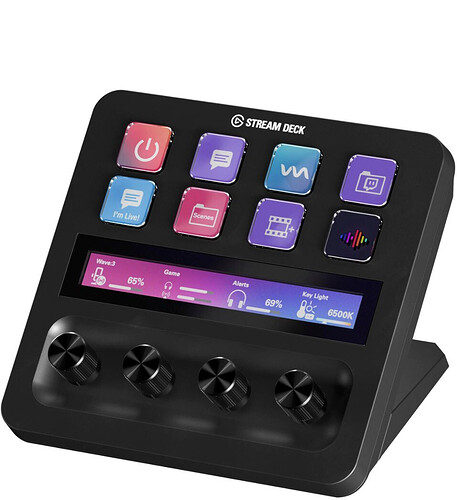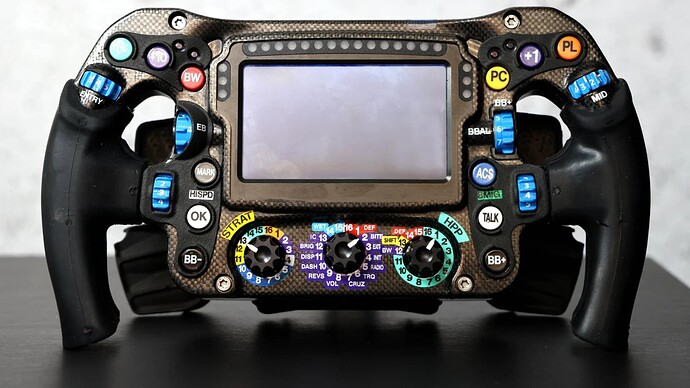But I wonder what the percentage would be now if you ran that poll again and simply asked “would you like better hard button support in Roomie, or are you happy with it as is?”
Seems like a rat race. At some point (begin analogy that I will use throughout this message), I’m starting to believe there are people for whom combustion engine cars will simply be what they buy for the rest of their life and no amount of sitting in a Tesla and seeing how much better it is will matter. They will vaguely mention things like feeling the engine and some kind of classic look and that’s as far as the discussion goes.
I don’t know what I can do about those people. Every year or two we add some kind of hard button remote feature and then every year or two the same people come around and talk about it again even soon after we add the biggest and most important one ever in our Harmony integration. So it’s not like we have not tried, but I’m obviously just not able to satisfy that group so I’m not sure it’s worth trying anymore.
We’re an app that has moved beyond that kind of stuff. The argument that goes “Hard button remote is almost a must have for kids, wife’s, guests etc” makes no sense. We handled those concerns ages ago. The app is now free so Guests can download it. Anyone with an iPhone can use Instant Home Sharing to control things in literally under a minute you can go from “I’ve never seen this app” to installed and controlling a home. The only rub is that you trade off some tactile feel of a channel button in return for a huge litany of features like Media Guides, gesture control, voice control, and countless others not possible or imaged with hard button remotes. Volume control has hard buttons on the iPhone.
As beautiful as Roomie is there is still a learning curve
I’ve used countless hard button remotes and it is safe to say there is a learning curve to each of them equal to or greater than Roomie.
Roomie running on an always-on dedicated device (iPad) with the app in the foreground and I still find it much, much faster to pause and control volume with a physical hard button remote
Something isn’t right with the analysis or the specific device you’re using then. The volume dial is invariably superior to holding down or up on a hard button imo. Perhaps it’s an ergonomic issue in your case, a stand issue, brightness, etc. Lots of factors here, but the generic claim doesn’t translate.
The ideal Roomie configuration - a dedicated device with Roomie running in the foreground and plugged into power - adds up pretty quickly in price even if buying the lowest cost iOS device. In my house I would need about 8 dedicated iOS devices to have ideal coverage (2 users in three viewing rooms, 1 guest user device, 1 “whole house” device to control things like whole house audio, lighting, etc.)
Apparently you have not priced out the actual competitive universal remotes. A new iPad mini is $499 (obviously it can be cheaper and there are many cheaper options, but for the sake of this, let’s max things out for fairness). Roomie is generically lets go Maximum Price at $249. Your example has 8 rooms. Your full Roomie deployment with a new iPad mini 6 in every room is therefore $4,241. I have done this experiment many times and priced out C4 and others and they are orders of magnitude more than that. I would estimate for a C4 system with remotes in 8 rooms (which has to include programming as well since they don’t let you do that), you’re looking at well over $10K. There is just no comparison here. To claim “adds up pretty quickly” in the face of the actual facts on the ground here indicates you have not actually looked at the comparable items.
Sofabaton
I’ve seen this one before and so many like it. Honestly, after doing this for 13 years, these things are out of business before I have time to establish relations with them. I can name at least 5 of these over the years that looked exactly like this one, none of which are around anymore. (Which is also a side indicator that perhaps making hardbutton remotes is a pretty poor business when everyone controls this stuff with apps these days.)
I’ve mentioned before that I have in my own home a parallel installation of Savant. Everything Roomie controls, Savant also controls (mostly) and vice versa. There are cases where only Roomie can handle something, and then cases specifically with Savant’s proprietary IP video switcher where I have to launch SSH commands on the Savant server from Roomie. Regardless, the point is I am always trying to reset my opinion of the market based on the reality of what I see in other systems, and I am constantly up close and personal with some of these other systems.
In our Guest Room, we do indeed have an X2 remote. Why did I do that? It seems so silly to me now. Basically I was brainwashed by this forum to try it feeling like I must surely be missing something. I have tried to train guests how to use the X2, it takes time and effort, and it’s the usual type of hard button remote with countless useless buttons everywhere half of which do nothing at any given time as is COMPLETELY NORMAL for hard button remotes. They were and are a user interface disaster, even to this very day. Instead, these days, I just tell guests to install Roomie for free and then I tap them into Single Room Mode for the Guest Room – the X2 goes unused. Now they don’t need to learn the remote, they get Media Guides, it’s all on their phone they already have and they already keep charged, they have Media Feedback with every device here, just a better experience in every way.
Anyway, I’ve said before essentially that (1) I don’t like hard button remotes. In part, I created Roomie specifically because I thought the concept of hard buttons had become absurd in the presence of two-way devices that were just starting to become ubiquitous at the time and now are at least 90% of devices. So fundamentally, there is an old adage that goes something like build the things you’d actually use as a customer. I definitely will never use a hard button remote, so I am not going to build that. (2) But, I do also listen to users, and I know some number of users are Combustion Forever die-hards, and so every year or two we do something in this area. What it comes down to is that if someone else builds a nice hard button remote, their business model, their problem, and we have an easy way to talk to that remote, and it doesn’t look like they’re going to go out of business 5 months later like every one of the others in the last 13 years, then great please let me know and pass along the info.
Until that time, which I assume may never come, it’s more productive to reference specific usability issues like those just mentioned by @ksalno in the context of usability instead of as something even related to the old world of hard buttons. For example, you might say “the usability experience of entering a password with this media player and needing to manually bring up the keyboard is very low and could use some kind of improvement as this is a common activity” –– or something in that vein. The point is that we can iterate and evolve virtually any of these areas. The solution is not to go back to Combustion, but rather to move forward and improve the software in whatever area wasn’t up to par.

